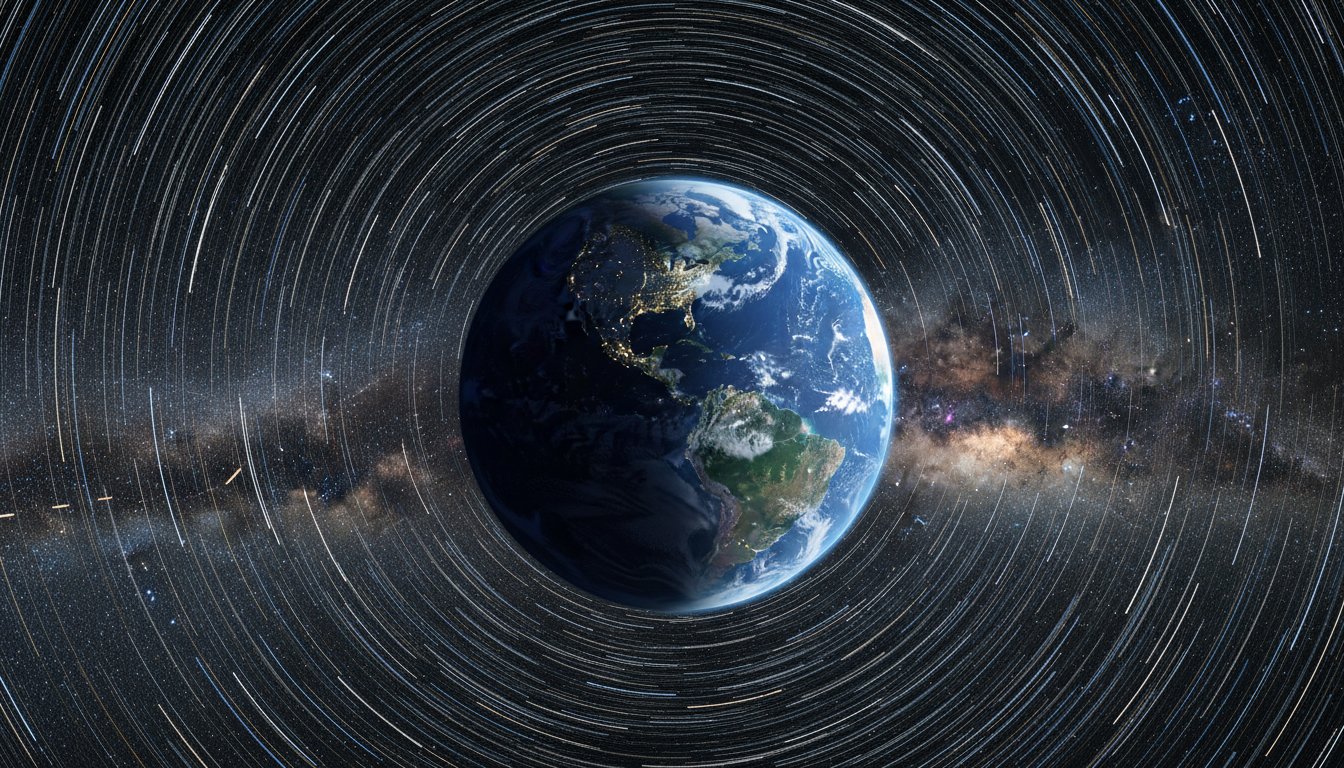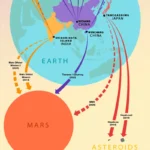In the quiet ticking of atomic clocks, a revolution is brewing—one that might one day erase a second from our lives. Recent measurements show Earth rotating slightly faster than before, producing minutely shorter days and resurrecting talk of implementing a negative leap second. That is, rather than adding an extra second (as we’ve done in the past), we might one day subtract one to keep our clocks aligned. The consequences? Anything but trivial.

The Mystery of the Speeding Earth
Tiny shifts, big implications
- On some days in 2025—July 9, July 22, and August 5—Earth’s rotation completed 1.3 to 1.6 milliseconds sooner than the standard 86,400 seconds. The Times of India+3Live Science+3Space+3
- The record so far was broken on July 5, 2024, when Earth spun 1.66 ms faster than average. Live Science+3Space+3Explorersweb+3
- Since 2020, scientists have observed a trend: these short-day anomalies appear more frequently than before. EarthScope Consortium+3Live Science+3The Times of India+3
Why is Earth speeding up?
The dominant trend over geological timescales has been slowing, thanks to tidal friction from the Moon. But superimposed on that is a tangle of competing processes:
- Redistribution of masses (e.g. melting ice sheets, shifts of groundwater) — when mass moves toward the equator, angular momentum makes Earth spin a bit faster. AP News+4EarthScope Consortium+4Financial Times+4
- The dynamics of Earth’s molten core—eddies, convection, magnetic coupling—can push or pull on rotational speed in unpredictable ways. Phys.org+3AP News+3SYFY+3
- Glacial rebound ( land rising after melting glaciers ) can shorten the day slightly by changing Earth’s moment of inertia. EarthScope Consortium+3Wikipedia+3Phys.org+3
- Yet, melting polar ice also has a counteracting effect: shifting mass from polar regions to broader oceans tends to slow rotation—this may be delaying when a negative leap second becomes necessary. Financial Times+2EarthScope Consortium+2
In short: Earth’s rotation is the net result of many tug-of-wars, and the recent acceleration is a signal that one or more of those forces has become stronger.
Timekeeping vs. Earth Time: The Leap Second Balancing Act
We live in an era of atomic precision—clocks based on cesium or optical transitions keep time so accurately that errors are measured in nanoseconds. But Earth doesn’t spin with perfect regularity. The result: a mismatch between atomic time (International Atomic Time, TAI) and astronomical time (UT1, based on Earth’s rotation).
To reconcile them, we use leap seconds. For decades, when Earth spun slightly slower, a positive leap second (+1 s) was occasionally inserted into Coordinated Universal Time (UTC). insidegnss.com+3Wikipedia+3Phys.org+3
But here’s the twist: no negative leap second has ever been applied—until now, the Earth has mostly drifted slower than atomic clocks. masterclock.com+3Wikipedia+3Phys.org+3

Because of the recent speed-up, scientists are now seriously debating whether we might need to remove one second from UTC in coming years. insidegnss.com+3Live Science+3AP News+3
The stakes are high. Some projections suggest this could happen around 2029 (or possibly a bit later, depending on Earth’s evolving spin behavior). gps.gov+5AP News+5EarthScope Consortium+5
Interestingly, in 2022, the General Conference on Weights and Measures resolved that leap seconds would be phased out by 2035, effectively allowing UTC and UT1 to drift apart gradually rather than forcing manual adjustments forever. Wikipedia+2EarthScope Consortium+2
Why Negative Leap Seconds Terrify Engineers
A one-second tweak might seem harmless, but for modern systems—GPS, financial trading, telecommunications, data centers—it’s a minefield. Here’s why:
- Time going backwards breaks assumptions
Computers and databases assume time is monotonic (always increasing). A negative leap second reverses the timeline (e.g. 23:59:58 → 00:00:00 skipping 23:59:59). That can crash schedulers, anomaly detectors, logs, or time-series analyses. Physics Forums+2berthub.eu+2 - Lack of precedent, untested system behavior
Negative leap seconds have never been deployed at scale. No one knows how thousands of interconnected systems would behave under the strain. IFLScience+2gps.gov+2 - Fragmented handling by different systems
Some systems smear the extra second (spread the adjustment gradually), others freeze the clock, or jump it abruptly. Inconsistent approaches could desynchronize systems further. gps.gov+2insidegnss.com+2 - Dependencies across critical infrastructure
- Global Navigation Satellite Systems (GNSS / GPS): While GPS internally uses its own time scale (GPS time), systems that convert from GPS to UTC could be thrown off. GPS World+1
- Telecommunications & networks: Synchronization protocols (like NTP, PTP) rely on smooth, predictable clocks; sudden backward jumps could cause packet rerouting errors or jitter. gps.gov+1
- Financial trading & timestamping: Some systems depend on strict ordering of events by time; a backward second could lead to misordered logs, audit mismatches, or even replay attacks. Abhishek Anand+2gps.gov+2
- Spacecraft, satellites, and astronomy: Precise timing is critical for orbital dynamics, signals, and payload operations; desynchronized time could propagate errors. gps.gov+2insidegnss.com+2
Because of these risks, many timekeeping and IT communities caution strongly. Some suggest that the costs of a negative leap second—potential system breaks, cascading failures—might outweigh the benefits of strict synchrony with Earth’s spin. gps.gov+2insidegnss.com+2
Alternatives and the Road Ahead
Given the dangers, researchers are exploring alternate paths:
- Smearing techniques: Instead of an instant jump, apply the offset gradually over hours. This reduces instantaneous disruption but can introduce drift between systems depending on smear method.
- Leap hours: Instead of adding or removing seconds, allow UTC to drift by several seconds over decades and then compensate by a full hour. But this introduces its own political and practical complications.
- Retirement of leap seconds: The 2035 plan anticipates ending the leap second regime entirely, letting astronomical and atomic times drift apart gradually. This is seen by many as the cleanest long-term path. Wikipedia+2EarthScope Consortium+2
- Regionally or domain-specific offsets: Some systems might apply local compensation internally while leaving global UTC untouched.
Ultimately, the decision will hinge on how Earth’s rotation behaves over the next few years—and whether engineers can build robust systems that survive a backward second.
Final Thoughts: A World Where a Second Can Be Deleted
It’s remarkable to think that something as fundamental as “time” might need retroactive editing. The Earth, with all its fluid dynamics and climate feedbacks, is sending us a message: the universe isn’t static. As we push toward the limits of measurement, we’re being forced to confront fringe scenarios we once considered science fiction.
A negative leap second would be a first in human history. If it ever happens, it would be a powerful reminder that even the flow of time is negotiable—and that keeping all our technosystems humming in perfect harmony with a spin-shifting planet is one of the grand challenges of the modern age.











